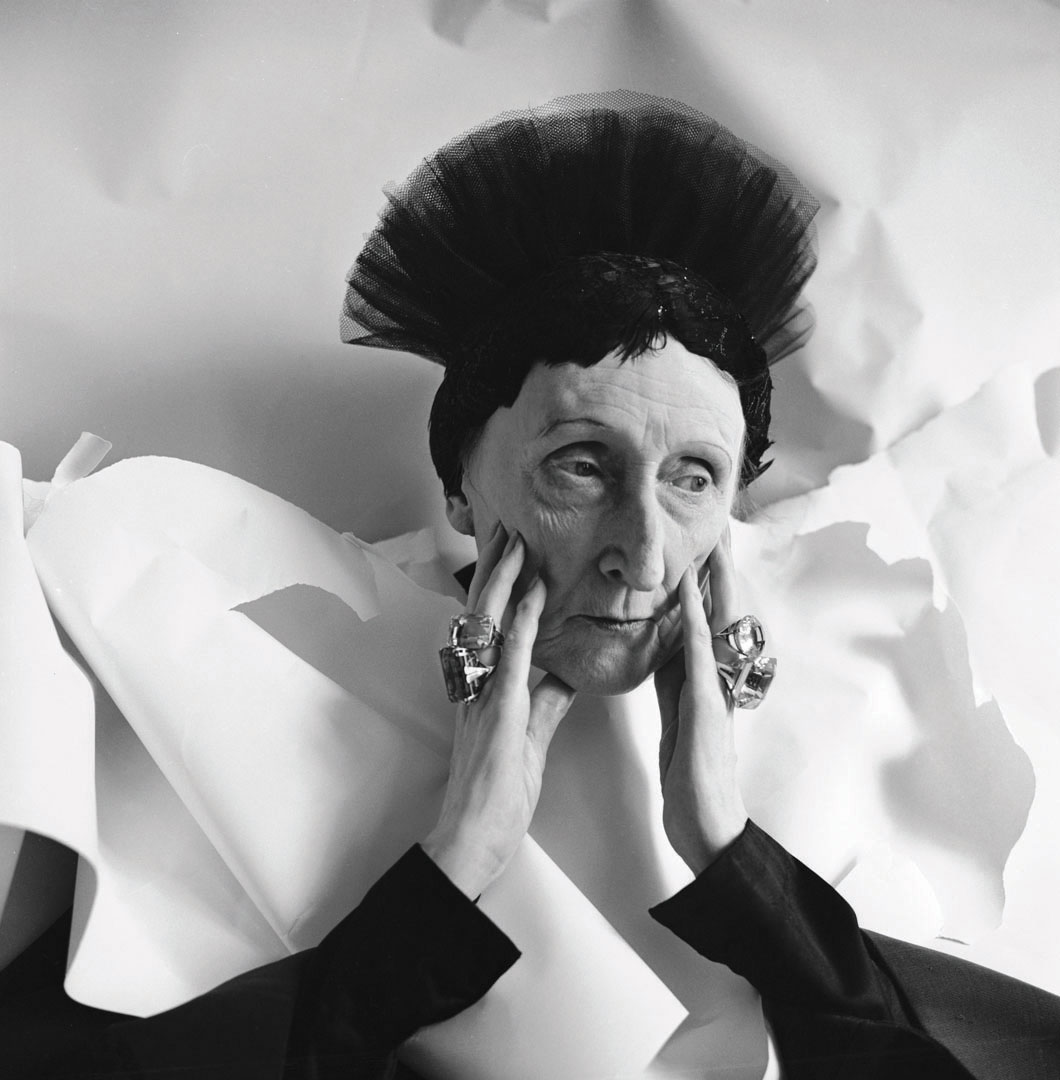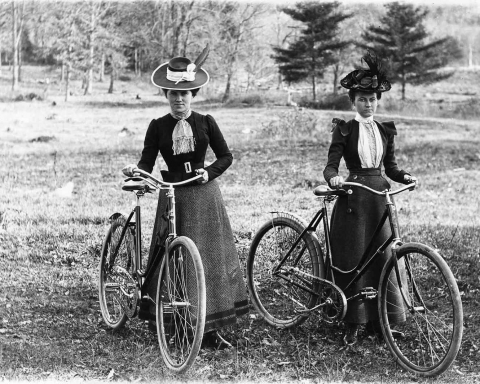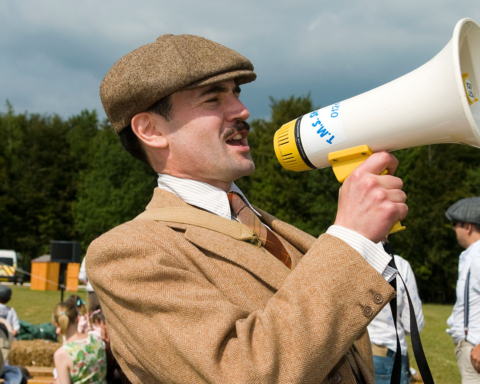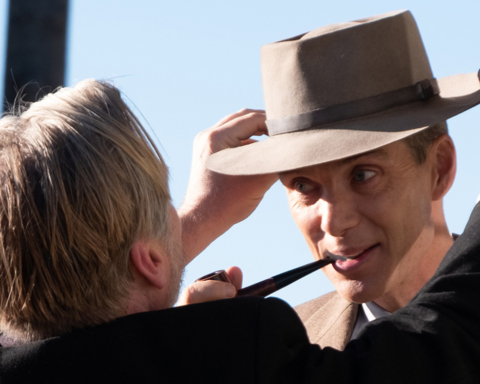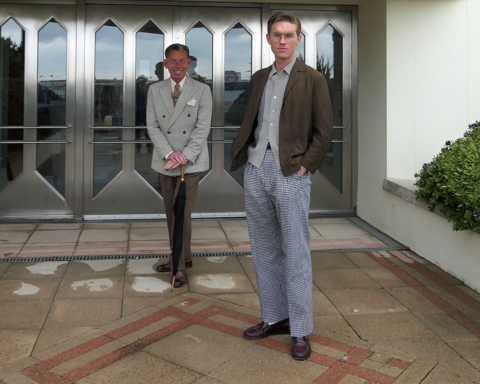Hip-hop was invented by languid 1920s socialite Edith Sitwell, argues Mr. B the Gentleman Rhymer.
Hip-Hop, that much maligned and derided of cultural phenomena, officially turned 40 years old last summer. In August 1973, a chap called Clive played some records at a party in a recreation room on Sedgewick Avenue in the Bronx, to raise some money for his younger sister to buy a school uniform. It seems an awfully long trek from those altruistic beginnings to the hedge-funded, greed-and-lust-fuelled behemoth that hip-hop appears to be today.
In the beginning, the disc jockey was king. Clive, or to give him his nom des disques, DJ Kool Herc, would isolate the part of each carefully selected ditty that he observed would create a frenzy of dancing and, using two copies of said gramophone disc, loop said section to create a continuous piece, thusforth keeping the audience on their toes and generally having a splendid do of it.
After a time, disc jockeys would invite their chums along to M.C. at these events. These masters of ceremonies would generally have been rambunctious types, who would invite the party-goers to join in singalongs or occasionally raise a toast to guests and generally keep the spirits up.

The M.C.s rapidly became the focal point of said soirees, often to the chagrin of the disc jockeys. The natural conclusion of this was The Sugarhill Gang’s Rapper’s Delight, the first ever ‘rap’ 45 single, which is understood by some to have left old Clive in something of a miff, being of the opinion that hip-hop was the realm of the DJ rather than the rapper. Whether this was true or not, Rapper’s Delight was a huge hit and commercial hip-hop was born.
So there’s a little potted history of the birth of rap. Over the 40 years hence, scholars have pontificated upon its influences and where it all sprang up from. The obvious and most widely held beliefs are that its furthest back influences were African tribal rhythms and chants, then later the early jazz-era scat singing of Cab Calloway and Slim Gaillaird. The 1960s brought James Brown and his staccato funk howlings, shortly followed by the more righteous beat poetry of the Last Poets and Gil Scott-Heron.

I would like to propose an alternative hypothesis:
Hip-Hop was invented by Dame Edith Sitwell. At a recent dinner, her Grandson, William Sitwell, who currently edits Waitrose Kitchen, a rag extolling the finer points of cooking from tins, declared as much and told fellow diners that his granny was “better that 50 Cent”.
Edith, who along with her brothers Osbert and Sachaverell formed a literary and artistic group around themselves in the early 20th century, wrote Façade-An Entertainment in 1918. A series of poems to be recited over music written by William Walton, a friend and protégée of hers, it was first performed in 1923 at a recital arranged and promoted by this group of siblings.
The performance proved a controversial one, as many critics of the day saw it as something of a ‘high-brow jape’ and considered the Sitwells to be nothing but attention seekers. This use of poetry, performed rhythmically over music, was seen as too radical for many, as did much early (and indeed later) rap.
Upon listening to the piece, be it the BBC’s 1930 recording featuring Constant Lambert and Sitwell in the M.I.C as it were, or the (now considered ‘definitive’) performance from 1951 featuring Peter Pears, the staccato rhymes and time signatures of the ‘readings’ are unmistakably hip-hop-esque. The words within, although seemingly nonsensical, appeared to allude to Dame Edith’s unhappy childhood. Although brought up within an aristocratic family (her mother, the former Lady Ida Emily Augusta Denison, claimed descent from the Plantagenets and her father was the 4th Baronet of Renishaw Hall, in the splendidly northern sounding Eckington, Derbyshire), or perhaps because of it, she had little time for her parents, largely due to their having locked her into an iron frame to ‘help’ her apparent spinal deformity. When asked by her parents what she wanted to be when she grew up, she replied simply ‘a genius’. She was banished to her room without any supper.

The similarity with rap didn’t end with the cadence of her rhymes and the controversies of her performances. Sitwell was an unusual dresser, wearing velvet or brocade gowns, often topped off with a turban. She was also an early advocate of what would become known as ‘bling’, adorned with large amounts of jewellery, with a particular penchant for wearing many rings. She was also, like her modern hip-hop peers, not averse to the odd ‘beef’. Being a woman who both thought and dressed in an unusual manner, at a time when women were rather strenuously encouraged to toe the line, attracted its share of detractors, most of whom she was more than happy to engage in a bout of sniping with. One of these was Noel Coward who, after deriding Edith and her brothers in a skit, was not spoken to again by Sitwell until her 70th birthday.
Coward is, of course another of whom it could be said was a precursor to hip-hop. His half-spoken, half-sung songs such as Mad Dogs And Englishmen display a similar joie-de-vivre to early B-boys the Funky Four Plus One or The Jonzun Crew.

In 1948, the Sitwell siblings had toured America, two years before Dylan Thomas arrived in New York and staked his own claim in rap’s unwritten history, making recordings of his poetry at the same time as the first be-bop records were being made and living in a style befitting a be-bopper. His recitals were unpredictable affairs, his audience unsure in which state of inebriation the speaker would appear, much in the same way that audiences fifty years later would wonder how many members of the Wu Tang Clan might arrive at any given show and how long they might bother playing for.
These recordings had none of the rhythmical zeal of Sitwell’s Façade though. At the time of her death, her name was said to have been associated with ‘snobbery, self promotion and literary feuds’.
What could be more hip-hop than that?
To view the entire recital of Façade, visit ones tube

